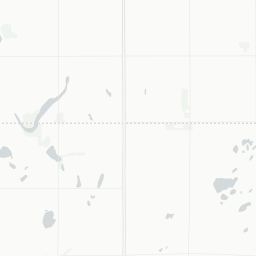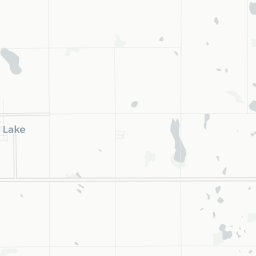It has been a long time since I’ve done a TidyTuesdsay post, but wind turbines, time series, and maps are hard to resist! My goal for this dataset was to make a standalone webpage housing an interactive dashboard by using crosstalk.
You can learn a bit about this week’s dataset here, but essentially we have spatio-temporal information on Canadian wind turbines. My overall goal was to present an option for looking at the data across time, but immediately I discovered the “time” component of our dataset - commissioning_date - needed a bit of clean up. Who has a column where some values are 2001 and some are 2001/2002? 😞 Unfortunately there didn’t appear to be an easy way to fully determine the actual commission date. A couple of options presented themselves:
- I could just “floor” the project date. So a project with a commission date like
2001/2002would represent all the turbines withyear = 2001. This option is the easiest but the least satisfying.
- I could create some kind of heuristic to assign turbines to years assuming a linear build out. For example, if a project had ten turbines split across 2 years (e.g., 2001/2002) I would assign the first 5 to 2001 and 6-10 to 2002.
Since I was on vacation, I decided to go with option 2.
# compute year based on turbine's rank
# in project and available commissioning years
# assuming a linear roll out over time
compute_year <- function(turbines){
# given data like 2001 / 2002
num_years = str_count(turbines$commissioning_date, "/")
cut_points = turbines$total_turbines / (num_years + 1)
# ceiling here because we want to start
# our counting at year1 (see separate call below)
turbine_yearid = (ceiling(turbines$turbine_rank / cut_points)) %>%
sprintf("year%d", .)
turbine_year = map_chr(
1:nrow(turbines),
~turbines[[.x,turbine_yearid[.x]]]
)
turbine_year
}
# pre-process
wind<- wind_turbine %>%
# split the gross date field
# ... with grosser code hard coded to assume
# at most 3 annual values :grimmace:
separate(commissioning_date,
into = c("year1", "year2", "year3"),
sep = "/",
remove = FALSE) %>%
separate(turbine_number_in_project,
into = c("turbine_rank", "total_turbines"),
sep = "/",
remove = FALSE) %>%
mutate(turbine_rank = as.numeric(turbine_rank),
total_turbines = as.numeric(total_turbines)) %>%
# call our function
mutate(computed_year = compute_year(.)) %>%
mutate(computed_year = paste0(computed_year,"-01-01"),
computed_year = ymd(computed_year),
year = year(computed_year)) %>% # needed later...
# prettier labels
mutate(label = paste0(
project_name, " <br/>",
total_project_capacity_mw, " project MW <br/>",
turbine_rated_capacity_k_w, " turbine kW <br/>"
))
# look at an interesting case to see what all this code did
wind %>%
filter(project_name == "St. Leon") %>%
select(turbine_identifier,
turbine_number_in_project,
commissioning_date,
computed_year,
starts_with("year"),
-year) %>%
rmarkdown::paged_table()turbine_identifier <chr> | turbine_number_in_project <chr> | commissioning_date <chr> | computed_year <date> | year1 <chr> | year2 <chr> | year3 <chr> |
|---|---|---|---|---|---|---|
| LEO1 | 1/73 | 2005/2006/2012 | 2005-01-01 | 2005 | 2006 | 2012 |
| LEO2 | 2/73 | 2005/2006/2012 | 2005-01-01 | 2005 | 2006 | 2012 |
| LEO3 | 3/73 | 2005/2006/2012 | 2005-01-01 | 2005 | 2006 | 2012 |
| LEO4 | 4/73 | 2005/2006/2012 | 2005-01-01 | 2005 | 2006 | 2012 |
| LEO5 | 5/73 | 2005/2006/2012 | 2005-01-01 | 2005 | 2006 | 2012 |
| LEO6 | 6/73 | 2005/2006/2012 | 2005-01-01 | 2005 | 2006 | 2012 |
| LEO7 | 7/73 | 2005/2006/2012 | 2005-01-01 | 2005 | 2006 | 2012 |
| LEO8 | 8/73 | 2005/2006/2012 | 2005-01-01 | 2005 | 2006 | 2012 |
| LEO9 | 9/73 | 2005/2006/2012 | 2005-01-01 | 2005 | 2006 | 2012 |
| LEO10 | 10/73 | 2005/2006/2012 | 2005-01-01 | 2005 | 2006 | 2012 |
Before we go any further, we should check if our “computed year” heuristic makes any sense. To do this, we’ll pick an interesting project (one split over multiple commissioning years) and then check if the breakdown makes sense.
colors <- c('darkred','purple', 'orange')
st_leon <- wind %>%
filter(project_name == "St. Leon") %>%
# mutate for fixed circle sizes below
mutate(turbine_capacity_10kw = turbine_rated_capacity_k_w / 10,
color = colors[as_factor(year)]) %>%
SharedData$new()
year_select <- filter_checkbox(
id = 'year',
label = "Year",
sharedData = st_leon,
group = ~computed_year
)
map <- leaflet(st_leon) %>%
addProviderTiles(providers$CartoDB.Positron) %>%
# use a addCircles to get a fixed size
#since we don't expect much zooming on this plot
addCircles(lat = ~latitude,
lng = ~longitude,
radius = ~turbine_capacity_10kw,
popup = ~label,
color = ~color)
# lay out widgets
div(
bscols(
# in bscols things add to 12!
widths = c(2, 10),
year_select,
map
)
)You can see how our “computed year” huerisitic mostly corresponds with geographic area. Each year’s build out was in a new area, which makes sense to me because that is how construction works. This gives me some reassurance that the heuristic is reasonable.
Now that we have some confidence our data is correct, we can use crosstalk to power an exploration.
# create the object for crosstalk
wind_sd <- SharedData$new(wind)
# for some reason distill
# and date driven sliders
# dont get along
year_slider <- filter_slider(
id = "year",
label = "Year",
sharedData = wind_sd,
column = ~year,
sep = ""
)
province_filter <- filter_select(
id = "prov",
label = "Focus on one province",
sharedData = wind_sd,
group = ~province_territory
)
map <- leaflet(wind_sd) %>%
addProviderTiles(providers$CartoDB.Positron) %>%
# use circle markers so that the mark scales as you zoom
addCircleMarkers(lat = ~latitude,
lng = ~longitude,
popup = ~label
)
power_plot <- plot_ly(wind_sd,
y=~province_territory,
x=~turbine_rated_capacity_k_w,
type = "bar",
transforms = list(
list(
type = 'aggregate',
groups = ~province_territory,
aggregations = list(
list(
target = 'x', func = 'sum', enabled = T
)
)
)
)
) %>%
layout(
title = 'Total Available Power (kW)',
yaxis = list(title = 'Province'),
xaxis = list(title = 'Total Rated Capacity kW')
)
height_plot <- plot_ly(wind_sd,
x=~province_territory,
y=~hub_height_m,
jitter = 0.7,
type = "scatter",
color = ~year
) %>%
layout(
title = 'Turbine Size',
xaxis = list(title = 'Province'),
yaxis = list(title = 'Hub Height (m)'),
color = list(title = 'Year Turbine Comissioned')
)
# lay out widgets
div(
bscols(
# bscols total is 12
widths = c(2,5,5),
# uses lists to represent "rows" within a column
list(year_slider, province_filter),
power_plot,
height_plot
),
map
)One final note. As you can see in the map, there is a bit of overplotting… One way to handle this normally in leaflet is to use clusterIds, which I demonstrate below. Unfortunately at this time clustering is not supported with crosstalk filters.
leaflet(wind) %>%
addProviderTiles(providers$CartoDB.Positron) %>%
# use circle markers so that the mark scales as you zoom
addCircleMarkers(lat = ~latitude,
lng = ~longitude,
popup = ~label,
radius = ~turbine_rated_capacity_k_w/100,
clusterId = ~project_name,
clusterOptions = markerClusterOptions()
)
























